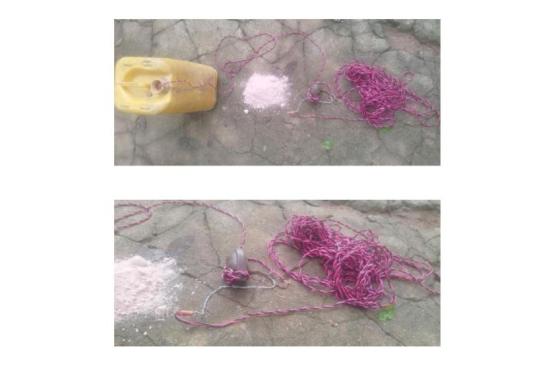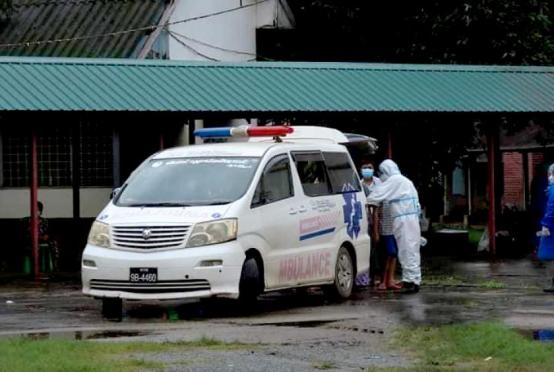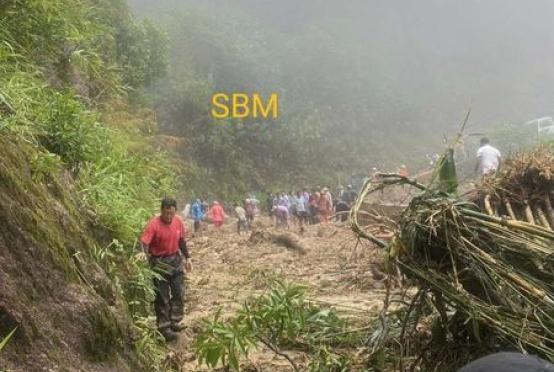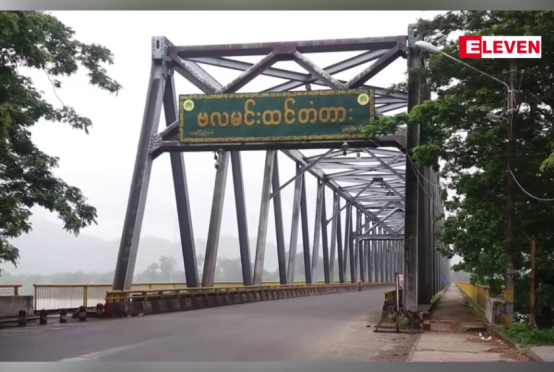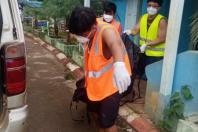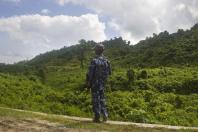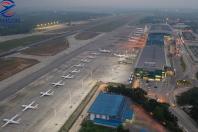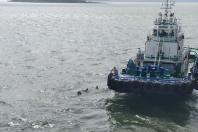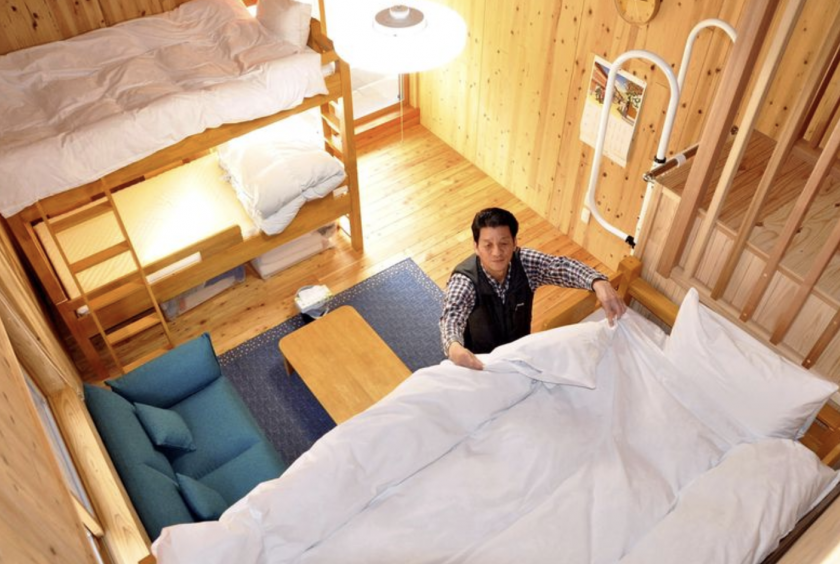
Tokyo (The Japan News) - Eight years since the Great East Japan Earthquake that devastated the coastal and other areas in Tohoku, the region’s economy has steadily moved toward reconstruction. In areas hit by the disaster, the sharing economy — a term that describes activities in which people provide or share access to goods or services — has begun appearing in the region. Moves aimed at establishing a self-sustaining economy are also spreading.
The city of Kamaishi in Iwate Prefecture is known as a town of iron, as government-run ironworks had been operated there since the Meiji era (1868-1912). In the city, Yuji Sasaki, 63, rebuilt in autumn 2017 his house at a restoration housing complex site that was developed on high ground overlooking the Pacific Ocean.
In August 2018, Sasaki began offering minpaku lodgings in his two-story house built with wood from Japanese cedar trees produced in the city. He has made two rooms available — one Japanese-style, the other Western-style — with a capacity each of up to four people.
So far, a total of about 120 people have stayed there, 20 percent of whom were foreigners.
Kamaishi was the base for the former Nippon Steel Corporation Kamaishi, a rugby club that won the All-Japan Rugby Football Championship for seven years in a row in the 1970s and 1980s. Kamaishi is also the only city in the Tohoku region that has a venue for the 2019 Rugby World Cup, to be held in Japan in autumn. But compared to the city’s stadium that seats about 16,000, Kamaishi only has enough room to accommodate about 1,400 people a night.
The Kamaishi municipal government has therefore been making preparations, such as promoting minpaku private lodgings that offer rooms at private homes as accommodation for visitors only when specific kinds of events are held.
The municipal government hopes that such lodgings will offer an opportunity for local residents to get interested in tourism promotion and help to increase the number of visitors to the city even after the Rugby World Cup.
“I would like this to be a base for people’s exchange and I want to serve as a local guide and storyteller, including providing disaster prevention education,” Sasaki said. He temporarily closed his minpaku lodging service in March, as it is the month the earthquake occurred eight years ago, but plans to resume the service in April.
‘Everyone’s drawer’
A store with a sign that reads “Everyone’s drawer” at a corner of a shopping district in Kesennuma, Miyagi Prefecture, offers about 300 items of secondhand children’s clothes for babies and small children.
Everyone’s drawer is a members-only shop where people pay a monthly or yearly fee for used children’s clothes. One can become a member by paying a membership fee of ¥5,000 a year (for up to 120 items) or ¥1,000 a month (up to 15 items).
Eri Takahashi, 27, who runs the store by herself, said, “Since there are only a few shops that sell children’s clothes in Kesennuma, I wanted to offer a system that makes effective use of used clothing.”
In 2017, the Reconstruction Agency held an event to compete for ideas about services related to the sharing economy, and Takahashi won the top prize. With the support of a local nonprofit organization, she opened the store in April 2018.
At present, the store has more than a dozen members, mainly mothers who have preschool children in the city. Members donate clothes no longer worn by their children to the store, which receives secondhand clothes from households across the nation, including Tokyo and Hokkaido, supporting the store’s mission and activities.
Expecting a baby in the summer, Takahashi will temporarily shut down the store in early May, planning to reopen it near her home after giving birth.
“I would like to spread the activity while emphasizing the importance of word-of-mouth,” Takahashi said, expressing her enthusiasm to have the new service take root in the city.
Market size doubling forecast
Two small cars in a Kesennuma city government parking lot were often used for car sharing by local residents and tourists on weekends and national holidays.
The official cars are used for public duties on weekdays by city government employees, who rarely use them on days when their offices are closed. The city government therefore devoted two of the vehicles for car sharing on a trial basis during a six-month period from September last year. The trial was undertaken for the purposes of ensuring means of transportation for residents and others, as well as for reducing administrative costs.
By registering with a system operated by a rental car company in Miyagi Prefecture and making a reservation, people could use the cars for a fee charged according to the length of time used and distance traveled. The trial ended Friday, and the city will now consider full introduction of the car-sharing service.
According to Yano Research Institute Ltd., the size of the sharing economy market in Japan is expected to grow by 50 percent, from ¥53.9 billion in fiscal 2016 to ¥82.4 billion in fiscal 2018. The market will likely double to ¥112.9 billion by fiscal 2020 compared to fiscal 2016.
“After experiencing the earthquake, people in the city are more aware of the importance of helping each other and supporting people in trouble,” said Mitsuhiro Sato, 42, an official at the Kesennuma city government’s reconstruction and planning department.
http://the-japan-news.com/news/article/0005598040


